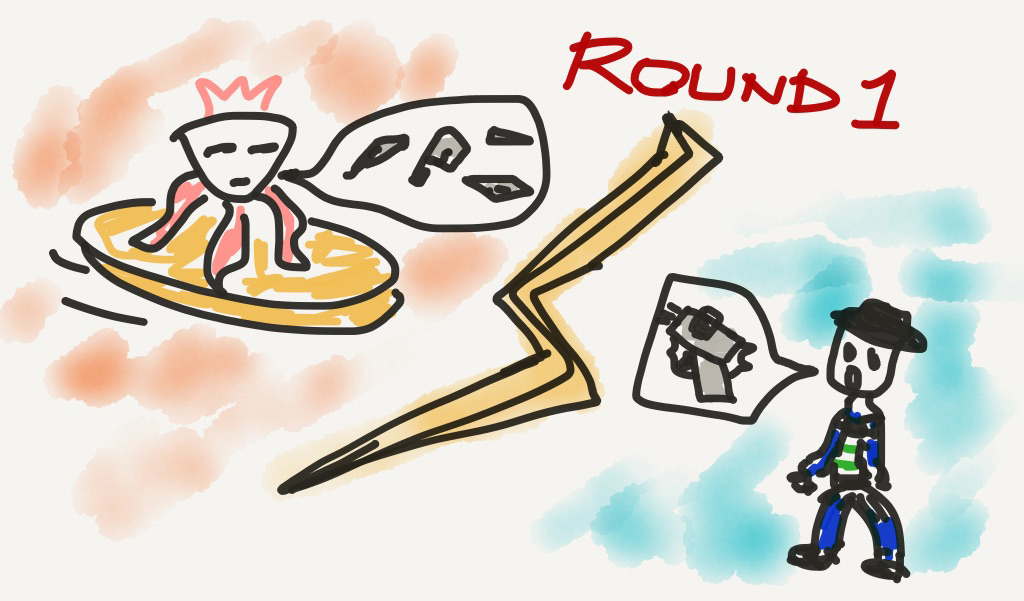In “The linguistic view in Three-Body (Part 1)” I briefly introduced the phenomenal sci-fi trilogy Remembrance of Earth’s Past, aka “Three-Body,” written by the Chinese author Cixin Liu. I also recounted my impression of fictional languages in general and concluded that their designs are typically influenced by the authors’ own linguistic background and experience. This applies to the (semi)fictional languages in Three-Body too, which are what I’ll write about in this post and the next. My commentary covers five points:
This post:
- Liu’s future languages
- How do interstellar conversations happen?
Next post:
- What’s the Trisolaran language like?
- Linguisticians on the team
- Cosmic Sociology and Cosmic Linguistics
Liu’s future languages
The language-related content in Three-Body is evidently influenced by Liu’s own background as a Chinese speaker living in the twentieth to twenty-first century.
For example, when describing Earth languages in the twenty-third century, Liu writes (and Martinsen translates) that “English … and Chinese … had blended with each other without distinction to become the world’s most powerful language” and that “other languages of the world were undergoing the same fusion” (The Dark Forest). Besides, some people left Earth to “colonize” space fleets instead, and they also formed their own language, which was an even tighter fusion of Chinese and English, with half of its vocabulary coming from Chinese and the other half from English.
This envisioning of future language is obviously too simplistic. We know that vocabulary loaning across languages happens all the time. Just think how many Latin-origin words there are in English! And mixing foreign words in daily speech is surely also common in our time. Even people from my tiny hometown who don’t speak English at all constantly use words like “WiFi” and “WLAN” due to the popularity of smart phones. Below are two more dramatic examples uttered by a celebrity Evonne Hsieh in a talk show aired in Taiwan:
- 我知道fashion很難學,你calm down。[Chinese]
“I know fashion is hard to follow, so calm down.” - Do you have 李安的 case?
“Do you have Ang Lee’s cases (i.e., job invitations)?”
The first sentence above mixes English in a Chinese context, while the second mixes Chinese in an English context. Below is another real-life and less dramatic example:
3. 你們覺得diss別人長相是low的行爲嗎?
“Do you guys think dissing others’ appearance is low behavior?”
Two centuries isn’t too long a period in historical linguistics. Modern English speakers can understand the Declaration of Independence (1776) without difficulty, and Modern Icelandic speakers can even easily understand Old Norse texts from the 1200s! So, if the massive language blending described by Liu hasn’t taken place in the past 2000 years, I can’t imagine how it can suddenly happen in the next 200.
What’s more, language change isn’t all about vocabulary change. According to this post Latin-origin (especially French-origin) words make up 56% of the English vocabulary, but does that make English indistinguishable from Latin or French? Obviously not. What keeps a language variety distinct is its grammatical system, not the source of its vocabulary.
Based on the above facts, personally I’d give Liu’s envisioning of future languages 1 star out of 5.
Rating: ★☆☆☆☆
How do interstellar conversations happen?
Unlike in many sci-fi novels and movies, where aliens automatically all speak English, in Three-Body Liu makes the effort to describe how humans and aliens manage to communicate with each other. In this respect Three-Body and Story of Your Life are similar, though unlike Story of Your Life, in Three-Body the human-alien communication is described as a much easier task.
Case 1: Red Coast Project (1960s)
Apparently the necessary translation technologies were already available in the 1960s, which by the way was how the entire story got kick-started. In short, everything that happened later in the novel, including the early death of our Solar System, was ultimately caused by a brief interstellar chat. So, just as the Arrival proverb goes: Language is a weapon.

Liu’s envisioning of interstellar communication is machine-based—or “machine translation” so to speak. In The Three-Body Problem the Chinese military project dedicated to this purpose was called “Red Coast.” It used “universal, basic mathematical and physical laws” to “construct an elemental linguistic code that can be understood by any civilization,” which in turn was converted to a “full linguistic system” with the supplementation of “low-resolution images” (Ken Liu’s translation).
For some reason, this Red Coast translator only supported two Earth languages: Chinese and Esperanto. This surprised me a bit, but the elemental-code-to-full-linguistic-system technology itself is highly appealing. I’ve heard of nothing this powerful in our mundane world. Machine translation is a thriving industry, but “a full linguistic system” sounds like a remote dream.
This isn’t clear from Liu’s writing, but I suppose the human-alien translation he had in mind wasn’t direct but was via a medium language (i.e., the elemental linguistic code). That’s possible because in The Three-Body Problem a Trisolaran functionary (called a “listener”) deciphered the first message from Earth by utilizing the “self-interpreting code” in the radio signal. He then translated a Trisolaran message into Chinese via the same self-interpreting code and sent it back to Earth (I won’t spoil what he sent but it was a super important message!).
However, in order for the rich information that can be expressed in natural languages, from cutting-edge sciences to everyday gossips, to be accurately encoded into and decoded from such a medium language, it must be super powerful—or really be a natural language itself! I doubt the “basic mathematical and physical laws” we know today have this kind of capacity.
Case 2: Supermembrane broadcast (around 189027th century)
What also surprised me was Liu’s description that this was “the first time” Trisolarans had ever read an alien message. How’s that possible considering science on Trisolaris is much more advanced than science on Earth? A potential explanation—and also a most reasonable one in the context of the novel—is that mature civilizations in the universe are actually extremely cautious in signaling their existence. Stephen Hawking warned humans about the lurking peril in uncalculated space outreach. Liu coined a term for exactly the same kind of concern, the dark forest theory:
The universe is a dark forest. Every civilization is an armed hunter stalking through the trees like a ghost …. The hunter has to be careful, because everywhere in the forest are stealthy hunters like him. If he finds another life … there’s only one thing he can do: open fire and eliminate them. … This is the picture of cosmic civilization. It’s the explanation for the Fermi Paradox. (Excerpt from The Dark Forest, Martinsen’s translation)

Of course, it may also be possible that Trisolaris is only more advanced compared to Earth but still too naive compared to other cosmic civilizations. In Death’s End the most advanced, “God-like” civilizations had long mastered the technology of deciphering any language in the universe and could also easily carry out cosmic broadcasting via supermembrane.
Such broadcasting only happened once in the novel (around the 189027th century) and Liu has only allocated each civilization a single slot in the “multilingual” message (“Trisolaran” for Trisolaris and “Earth” for Earth). But even with this maximal simplification there were still 1.57 million languages in the broadcast, which Liu describes as “a tiny number” because it only included languages of civilizations that hadn’t completely gone extinct (well, at the time of the broadcasting there were only two humans left…). According to Ethnologue, as of 2019 there are 7111 languages being actively spoken on Earth alone. Considering there are planets much larger than Earth, the diversity of cosmic languages must be much more immense than we can imagine.
Case 3: Rosetta System (23rd century)
In Death’s End Liu describes a special database called the “Rosetta System,” which was developed by humans to teach Trisolarans Earth languages. The basic method it used was drawing connections between linguistic symbols and images, which “an alien civilization could decode and study” (Ken Liu’s translation).
One concern I’ve had about this method is that not all linguistic symbols can be readily picturized. It’s easy to picturize apple, star, and walk, but what about subtle, sweet, and nostalgia? Idioms are also an obvious obstacle, because the picture associated with, say, rain cats and dogs, involves neither cats nor dogs. However difficult second language learning is on Earth, the difficulty level would only exponentially escalate in space.
The Rosetta System was presumably an improved version of the Red Coast System—also equipped with a natural-language-to-elemental-linguistic-code translation component—because in order to teach Trisolarans how to use the “software” there had to be some interface instructions. And those instructions obviously couldn’t be written in an Earth language, or interstellar language teaching couldn’t be bootstrapped.
Interestingly, the Rosetta System had success not only with the Trisolarans but also with another four-dimensional civilization (more exactly its debris). On their way into outer space, an Earth fleet passed by a four-dimensional object in the form of a sealed ring. (This is my favorite subplot in the novel by the way.)
The crew attempted to communicate with the ring by first sending it a sequence of prime numbers (to test whether it had intelligence) and then sending it the entire Rosetta System via neutrino signals. To their surprise, the ring managed to learn Earth language in just a few minutes and subsequently revealed them some dark secrets about the universe in fluent and poetic “Chinglish” (i.e., the dominant language in the twenty-third century).

I think the three cases above reveal three hypothetical facts about interstellar communication:
- It’s possible.
- Alien language deciphering is much easier for more advanced civilizations.
- So the key tactic of less advanced civilizations should be finding an efficient cosmic medium language to facilitate 2 (i.e., what the humans in Three-Body did) instead of trying to decipher alien languages from scratch (i.e., what the humans in Arrival did).
Though of course, 3 is a highly risky move according to the dark forest theory…
Anyway, Liu’s imagination of interstellar communication is dark but sensible, not entirely scientific but very thought-provoking, and the two amazing language tools (Red Coast and Rosetta) also give machine translation industry today a fancy goal to emulate. So, this time I’d give Liu 4 stars out of 5 (not 5 stars because I don’t think math/physics provides a good medium language).
Rating: ★★★★☆
Click here for Part 3 of this article.



Leave a comment